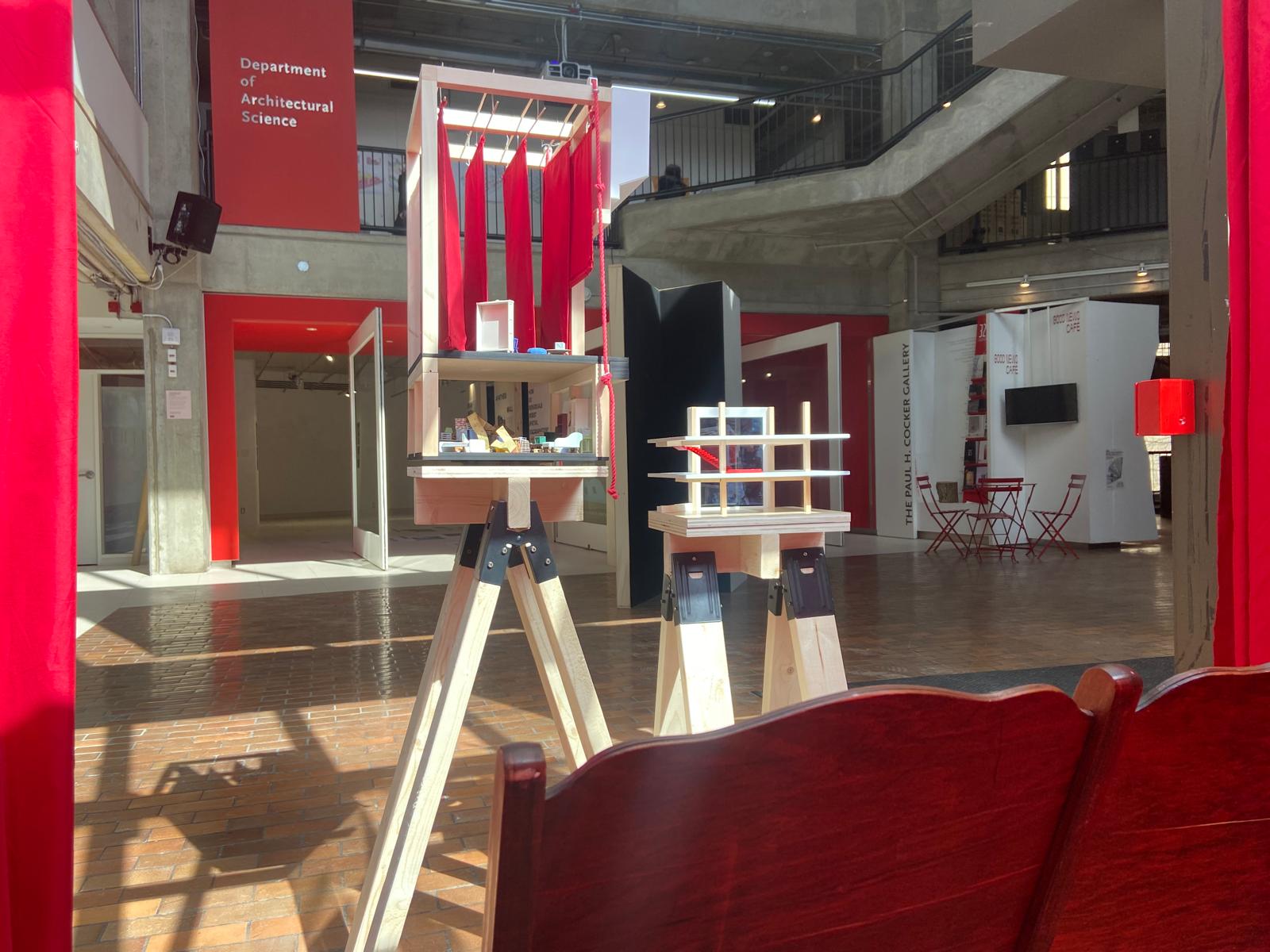MASTER OF ARCHITECTURE
Olivia Nunn— Alpha Rho Chi Bronze Medal
![]()
Olivia Nunn— Alpha Rho Chi Bronze Medal
About the Award
Alpha Rho Chi Bronze Medal:
For those students who have achieved high academic standing in the top 10% of their graduating class.
MArch Thesis
Architectural Theatricality: Dramatizing Space
This research engages theatricality as a model for architectural exploration. The work aims to bridge the gap between performing artists and architects, those who create performances and those designing places for performance creation. This fusion of architectural and performance representation methods begins to generate a new performative mode of architectural devising. Architectural theatricality proposes a productive relationship between humans, events and the built environment. Architectural theatricality is the changing perception of architecture as it is influenced by the variation of human activity. By using theatricality as a model for design thinking, this thesis dramatizes sites of the Toronto Metropolitan University campus, igniting engagement with the built environment for students, spectators and performers. The actors, in turn, shape and become shaped by an animated architecture, shifting the current performance qualities that appear in everyday life. Through theoretical research, interdisciplinary case studies, in situ movement exercises and attending an architecture/artist residency first hand, the research begins to inform a new method for designing, exploring the reciprocities of building and performing through techniques that explore improvised and choreographed movement, and events at a human scale . The design method is developed through the installation at TMU’s urban campus, titled Performance in Progress. The campus becomes a physical and pedagogical intersection for those creating performances and those designing space. The human body becomes the focus. How one acts, perceives and moves transforms space. The design reveals and amplifies the performative qualities of the campus; exposing the interdisciplinary potential of architectural design methodologies and the institution. The project tackles an integration of theatricality into architectural design processes engaging both students and performers to co-create and redefine their interactions with built environments, suggesting a transformation for designing moving forward.
If traditional architectural practice prioritizes permanence, control, and predictability, this work insists on the value of the ephemeral, the improvised, and the affective. Architecture, in this view, becomes a dynamic field of interdisciplinary relationships, a stage, a rehearsal, a set of conditions that unfold through time and occupation. The proposed architectural thinking reimagines how architects conceive space by conjuring the events that give meaning to the form. Events challenge architecture’s static built form, giving agency to its occupants to shape space through performativity. The resulting thesis project does not prescribe how the space is used, but rather ignites desirable situations, prompting theatricality. The potential of the thesis is not limited to the installation, Performance in Progress, but in what it makes possible, rehearsing what architectural futures could do.
Alpha Rho Chi Bronze Medal:
For those students who have achieved high academic standing in the top 10% of their graduating class.
MArch Thesis
Architectural Theatricality: Dramatizing Space
This research engages theatricality as a model for architectural exploration. The work aims to bridge the gap between performing artists and architects, those who create performances and those designing places for performance creation. This fusion of architectural and performance representation methods begins to generate a new performative mode of architectural devising. Architectural theatricality proposes a productive relationship between humans, events and the built environment. Architectural theatricality is the changing perception of architecture as it is influenced by the variation of human activity. By using theatricality as a model for design thinking, this thesis dramatizes sites of the Toronto Metropolitan University campus, igniting engagement with the built environment for students, spectators and performers. The actors, in turn, shape and become shaped by an animated architecture, shifting the current performance qualities that appear in everyday life. Through theoretical research, interdisciplinary case studies, in situ movement exercises and attending an architecture/artist residency first hand, the research begins to inform a new method for designing, exploring the reciprocities of building and performing through techniques that explore improvised and choreographed movement, and events at a human scale . The design method is developed through the installation at TMU’s urban campus, titled Performance in Progress. The campus becomes a physical and pedagogical intersection for those creating performances and those designing space. The human body becomes the focus. How one acts, perceives and moves transforms space. The design reveals and amplifies the performative qualities of the campus; exposing the interdisciplinary potential of architectural design methodologies and the institution. The project tackles an integration of theatricality into architectural design processes engaging both students and performers to co-create and redefine their interactions with built environments, suggesting a transformation for designing moving forward.
If traditional architectural practice prioritizes permanence, control, and predictability, this work insists on the value of the ephemeral, the improvised, and the affective. Architecture, in this view, becomes a dynamic field of interdisciplinary relationships, a stage, a rehearsal, a set of conditions that unfold through time and occupation. The proposed architectural thinking reimagines how architects conceive space by conjuring the events that give meaning to the form. Events challenge architecture’s static built form, giving agency to its occupants to shape space through performativity. The resulting thesis project does not prescribe how the space is used, but rather ignites desirable situations, prompting theatricality. The potential of the thesis is not limited to the installation, Performance in Progress, but in what it makes possible, rehearsing what architectural futures could do.





